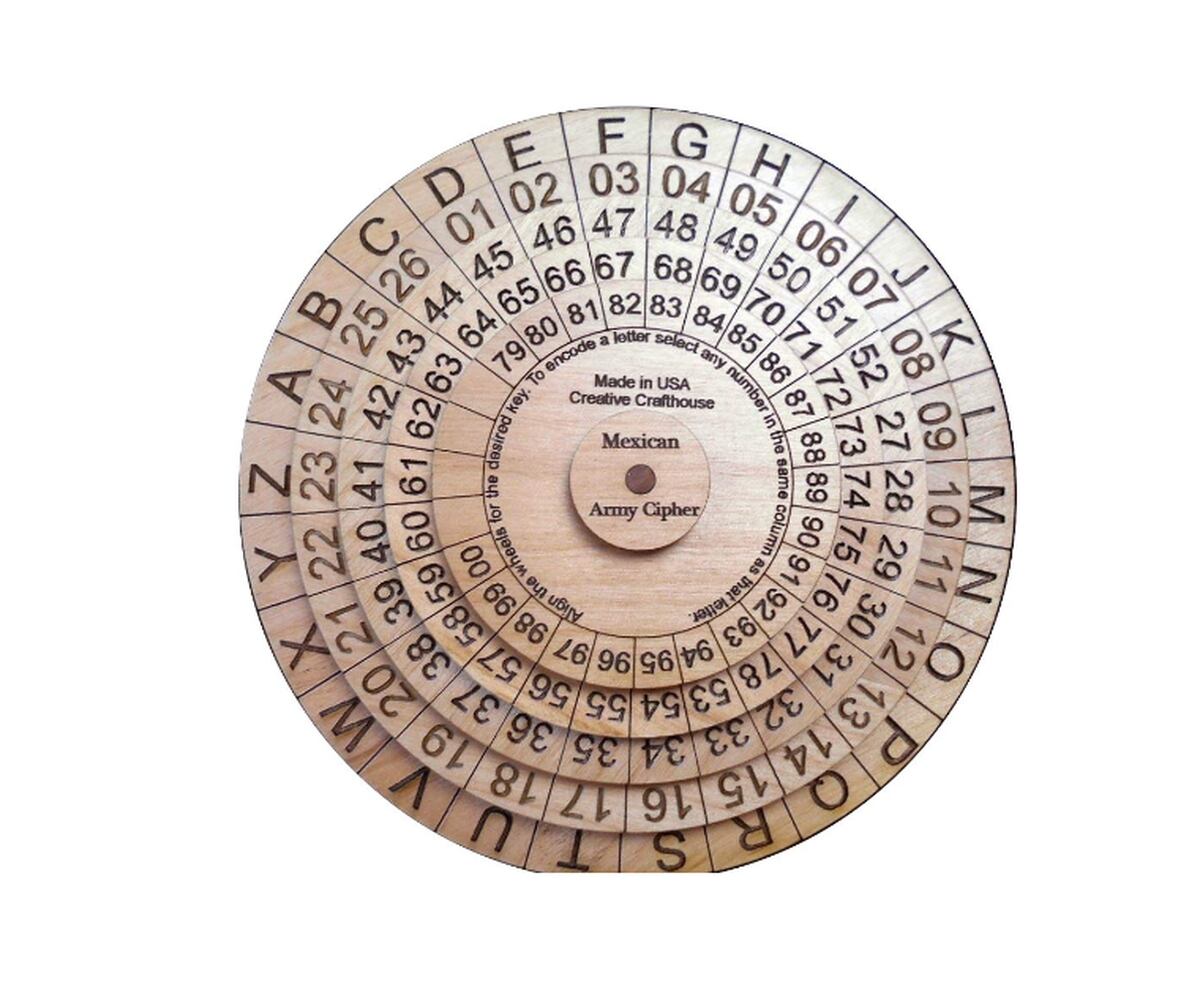in his story The dancers, Conan Doyle turns Sherlock Holmes into a cryptographer and makes him decipher a curious message made up of a succession of schematic little men in various body positions. As usual, Doyle copies Poe’s teacher from him, for, as in The Gold Bugthe key to deciphering the message lies in realizing that the sign that is repeated the most must correspond to the most frequently used letter, which in English is e (in the attached figure we see a fragment of the message deciphered by Holmes ).
both in The Gold Bug like in The dancers, these are simple cases of substitution encryption: each letter of the original text (or plaintext, in cryptography jargon) is replaced by a different sign, which can be another letter, a number or, as in this case, a figure For example, in the following cipher phrase:
BA ECAIOUBC EDUFAC
each consonant corresponds to a vowel of the initial phrase and vice versa, and I am sure that my astute readers will decipher it without difficulty, following the example of Holmes, knowing that the mysterious phrase answers the question: “What did you see rise from the depths? the terrified fisherman?
To make it difficult to decode a message encrypted by substitution, which in cases like the ones we have just seen is quite simple, they are used (or were used, rather, since substitution encryption has fallen into disuse due to its low resistance to an attack). computer) different techniques, such as the inclusion of characters that have no meaning (called null characters), the elimination of white spaces, the elimination of double consonants and other easily identifiable letter sequences, etc. Compare, for example, the difficulty of the above encrypted sentence of three words (one of them of two letters, which considerably limits the possibilities), with that resulting from removing the spaces:
BAECAIOUBCEDUFAC
As an associated “Fermian” problem, one wonders how many different ways the spaces in this 16-letter sequence could presumably be distributed according to the rules of the language.
Caesar Cipher
The best known and most historically used type of substitution cipher is the shift cipher, also known as the Caesar cipher because it was the one used by Julius Caesar to send encrypted messages to his generals. It simply consists of replacing each letter with another located a fixed number of positions later in the alphabet. For example, with a shift of order 3, A becomes D, B becomes E, C becomes F, and so on. It has the advantage that, with the eventual help of a cipher wheel, in which the letters go in two concentric circles that can rotate relative to each other, encoding and decoding are much faster than with other encryption methods. substitution; although, for that very reason, messages encrypted in this way are easier to crack, which is why the Caesar cipher was used – and in fact is still used – in combination with other techniques, such as in the Vigènere cipher (which we will deal with on another occasion).

I invite my astute readers to decipher, with the help of the attached wheel (or maybe not), the following scroll-encrypted message:
DCJGXTCPYLM
In the figure, the shift, which converts the A to the G, is of order 6; but it goes without saying that this is not the solution.
You can follow MATTER in Facebook, Twitter and Instagramor sign up here to receive our weekly newsletter.
#encrypted #messages

Leave a Reply